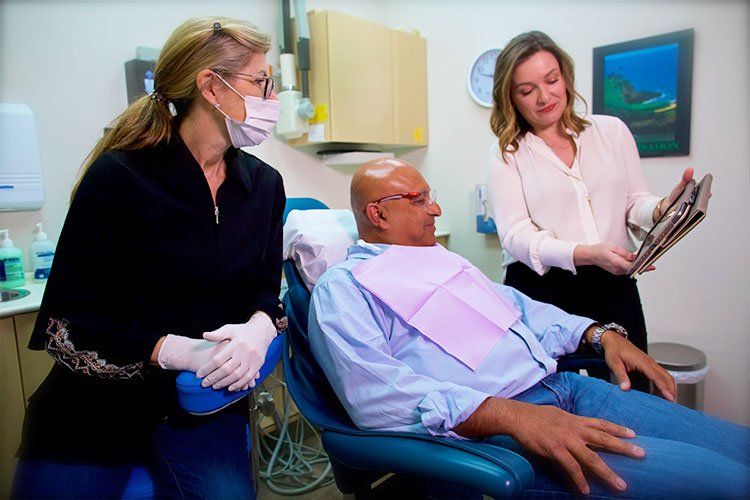Root Canal Therapy
Does your tooth hurt? Do you have a swelling near a tooth with a large cavity? Or has a tooth broken significantly due to an accident?
A Root Canal, or Endodontic, treatment is required when a tooth is badly damaged due to decay or accident, but not so badly damaged that the tooth cannot be saved. In these cases, the only alternative to a root canal procedure is to extract, or remove, the tooth. However, preserving your natural tooth is almost always preferable to extraction, as studies have shown that your general health and longevity are better when you keep your teeth.
A Root Canal treatment involves removing the pulp inside the tooth, which is comprised of nerves, blood vessels and connective tissue. You will be completely frozen during this procedure and should not feel anything. The pulp is completely removed, and then the inside of the root is shaped and cleaned. Finally, the canal is filled with a rubbery material called gutta percha, which seals the root, preventing bacteria from growing inside the tooth.
The visible part of you tooth, or crown of the tooth, will have to be restored after the Root Canal treatment is completed. The inside of the crown will require a core to replace the missing tooth material, and if a lot of tooth is missing, a post may be required to bind the core to the remaining tooth. Finally, a crown will be required, to cover over all of the visible tooth and keep it together for the long-term.
After a Root Canal treatment, your tooth is no longer alive on the inside, but it is still held in place by living tissue, the periodontal ligament, which connects your tooth to the bone. A Root Canal treatment saves your tooth, allowing you to chew with it for many years to come.
Root Canal Therapy
Does your tooth hurt? Do you have a swelling near a tooth with a large cavity? Or has a tooth broken significantly due to an accident?
A Root Canal, or Endodontic, treatment is required when a tooth is badly damaged due to decay or accident, but not so badly damaged that the tooth cannot be saved. In these cases, the only alternative to a root canal procedure is to extract, or remove, the tooth. However, preserving your natural tooth is almost always preferable to extraction, as studies have shown that your general health and longevity are better when you keep your teeth.
A Root Canal treatment involves removing the pulp inside the tooth, which is comprised of nerves, blood vessels and connective tissue. You will be completely frozen during this procedure and should not feel anything. The pulp is completely removed, and then the inside of the root is shaped and cleaned. Finally, the canal is filled with a rubbery material called gutta percha, which seals the root, preventing bacteria from growing inside the tooth.
The visible part of you tooth, or crown of the tooth, will have to be restored after the Root Canal treatment is completed. The inside of the crown will require a core to replace the missing tooth material, and if a lot of tooth is missing, a post may be required to bind the core to the remaining tooth. Finally, a crown will be required, to cover over all of the visible tooth and keep it together for the long-term.
After a Root Canal treatment, your tooth is no longer alive on the inside, but it is still held in place by living tissue, the periodontal ligament, which connects your tooth to the bone. A Root Canal treatment saves your tooth, allowing you to chew with it for many years to come.
Request an Appointment
Root Canals
Thank you for contacting us.
We will get back to you as soon as possible.
We will get back to you as soon as possible.
Oops, there was an error sending your message.
Please try again later.
Please try again later.



